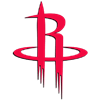The 2022 NFL Season is right around the corner and in this article, we'll dive into some basics as well as advanced strategies for showdown slates to gain an advantage in cash games (50/50s) and guaranteed prize pool (GPP) tournaments. While most daily fantasy sports (DFS) players are well accustomed to Sunday's weekly main slate of 10-plus games, the showdown format takes center stage Thursday, Sunday and Monday nights to offer fantasy players action on a single game.
Showdown Basics
DraftKings: One Captain and five flex spots; full point-per-reception (PPR). Captain's salary and points are each multiplied by 1.5x.
FanDuel: One Captain and four flex spots; half PPR. Captain points (not salary) multiplied by 1.5x.
A couple things differentiate DraftKings and FanDuel, beginning with PPR vs. half-PPR scoring, which gives slightly more value to wide receivers and pass-catching running backs on DK compared to FD. The flex option that both sites use for showdowns gives you the ability to use as much or as little of one position as you'd like and create various roster builds.
Choosing who you use in your captain spot will alter your roster construction on DraftKings due to the 1.5x multiplier on the captain's salary and point total, while FanDuel only multiplies the captain's points and not the salary. As a result, going with a low-cost option in the captain spot on DK will let you pay up for several star players while a high-priced captain will require finding a hidden gem or two, and a low-cost captain on FD becomes a much riskier proposition but can give you a contrarian build for GPPs.
Building Your Lineup
A good place to start when constructing a lineup is to look at the spread and projected total to get a feel for how the game is most likely to play out. In games where the over/under is high (50-plus points), the favored QB tends to be a must-play in cash games and only a fade in GPPs if you want to against the grain. I also like using the underdog RB. The reasoning is the favored team is likely to score 28-plus points, making it fairly common for the QB to have a ceiling game, while the underdog RB should see increased touches and efficiency in what's likely to be a more up-tempo game.
In games with low totals (under 43 points), I've found the underdog QB is usually moderately priced and typically will at least meet or exceed his salary expectation. I'm most likely to pay up for the favored WR1 more than anything else in the expectation of getting a bunch of receptions with teams less likely to find the end zone. In games where there is a double-digit favorite, I like to look toward the favorite's WR3 or WR4 as it's a good opportunity for them to spread the ball around to other receivers who can take advantage of a weaker matchup. Third-down backs are also good targets on the team you suspect will lose. This often happens because they are behind late in the game, passing often and dumping off to the back against zone or prevent defenses.
Kicker/Defense Strategy – Kickers and defenses are tricky for many DFS players as they are often overlooked simply because fantasy players want to root for skill position players. Kickers are typically priced slightly more than defenses, which might make it enticing to play a defense, but you're better off paying a little more for a kicker due to their safe floor (40-49 yard field goals are worth four points, 50-plus worth five on both sites). While defenses can occasionally put up some ceiling games against struggling offenses if they're able to record a score and force multiple turnovers, those games don't happen often. Conventional wisdom would be to employ a defense in games with lower totals or on a big favorite, and kickers in games with close spreads. In general, I'd advise against using more than one kicker and one defense in your lineup as more than that will eat into your upside potential.
Finding an Advantage
Correlation is a topic that's talked about often in DFS, and while it's important in main slate GPPs when there are a lot of games and you're trying to win a big contest, it's not as important of a factor in showdowns when there's just one game. One strategy that you can use with correlation in showdowns is to use a QB in the captain spot with multiple receivers from the same team, or a WR/TE in the captain spot with the QB. However, if you use a WR in your captain spot who has a low or mid-range salary, it's not a necessity to use the QB as he doesn't need a ceiling game from the QB to exceed his salary expectation.
Another important factor to consider in showdowns and DFS in general is being contrarian in GPPs. While sometimes the most popular play ends up being the highest-scoring player, it's also a way to gain a big advantage on the field if you fade that player and he has a mediocre, at best, result. Another way to be contrarian is to build a unique roster by leaving salary on the table. While it might feel like leaving money unused is a mistake, we'll occasionally see low-scoring games result in a GPP winner with $5k or more unspent, as you can vault yourself to the top of the leaderboard if your players hit with an unorthodox roster build. Note that is something you would only want to do for GPPs and not 50/50s.
This is something that differentiates showdown slates from main slates in that you don't want to leave more than a couple hundred in salary when there are several games in play, as you can build a contrarian lineup and still use up your entire salary. Another way to be contrarian is to find at least one player who is going to be rostered by a small percentage (at least less than 10 percent) of the entrants. Quarterbacks also come with high roster percentages as the field struggles to shy away from them. Fading at least one QB is another way to come up with a more unique build.
Another thing to pay close attention to is the inactive list, which is made available 90 minutes prior to kickoff. While marquee players who are questionable to play will be heavily monitored by most DFS players, it's easy to overlook offensive line or defensive players who might change the game script. Sometimes there are surprise inactives to backup RBs or a team's third or fourth receiver on the depth chart as well that will give an opportunity to a player who has seen minimal playing time and is likely priced $1k or less. These players usually only need to score a handful of points to exceed their salary expectation and usually aren't rostered highly.
Final Thoughts
Game Selection is something that a lot of DFS players don't think about too much, but it's something that needs to be taken strongly into account. While the contests with the biggest payouts and most entries are marketed the most, taking down a contest with 5,000-plus players is incredibly difficult for even the best and most seasoned DFS players unless you max entry them. It's important to give yourself a balance and mix in some 50/50 contests even if you prefer GPPs. If you don't like to max-enter contests, both sites also offer single entry contests. As fun as it might be to create 10-plus lineups in a small entry fee tournament, spending up and creating one lineup you're confident in is a way to increase your ROI and have a more realistic chance at a sizeable payday.
Finally, don't give away a roster spot with a likely zero. As tempting as it might be to load your roster with a bunch of $8k-plus players, plugging in the fifth string wideout who never plays because you only have $200 salary left in your last roster spot is far from optimal. Your lowest-priced player still needs to get snaps and at least have a chance to put up points, and there are enough options under $3k to make it happen.








































